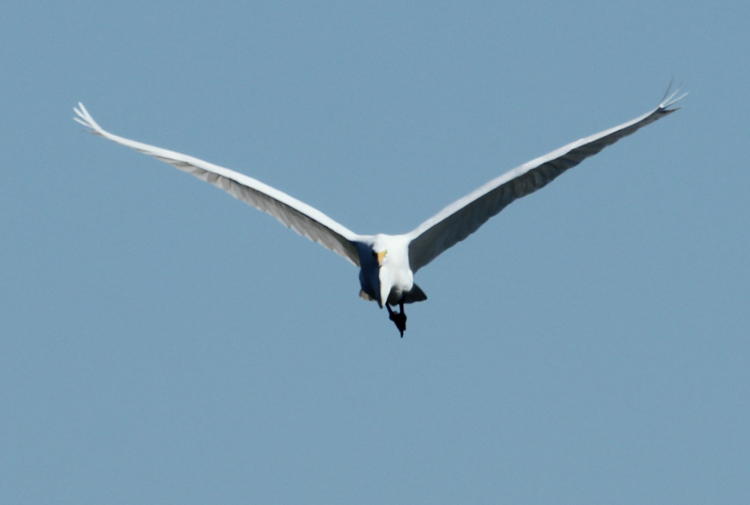
I am presently deep within an investigation: what exactly is causing the autofocus on the Tamron 150-600 to be so undependable? Another outing chasing birds on Jordan Lake produced far too many images where focus wasn’t anywhere near where it was supposed to be, and I had made it a point to try and trip the shutter only when it seemed locked on. At times it would be bang on, and at times, like above, it would be close, but not what it should have been, and this is with no other subjects in the frame that might have fudged its locking point. It’s annoying, especially with images like this that had a great set of contrast conditions to produce that harlequin effect.
Right now I’m trying to determine if it might be a lens fault, a camera fault, or my fault. For instance, there’s no question that tracking flying birds is about the most demanding conditions for such a lens, and pretty demanding on the photographer too – the weight of the lens and the nature of the balance mean that handholding the lens and camera produce less-than-ideal conditions. The balance point, where one has the most control, sits a little less than midway out along the length of the lens, where at least there’s a tripod mount to brace with, but, the pivot point, the spot that the lens is moving around when tracking a subject, is back by the viewfinder; this is kinda necessary because otherwise you’re moving your head around a lot while trying to maintain the balance point more-or-less steady. It just doesn’t work that way.
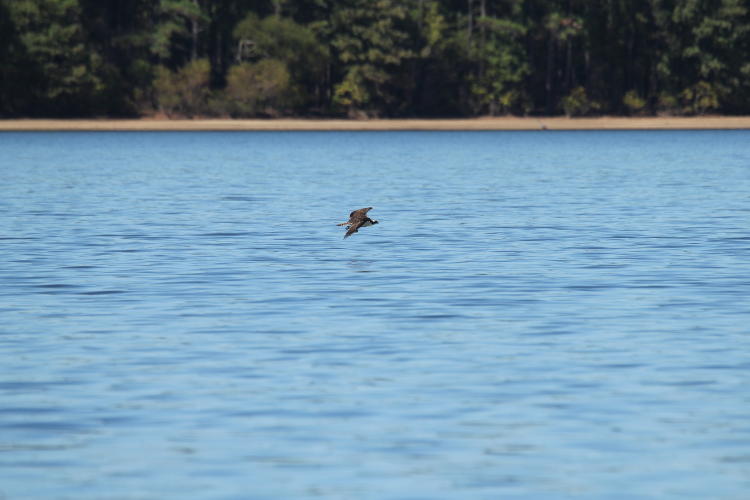
This is full-frame, by the way, what I was actually shooting, while we’ll get to the detailed crops in a moment. Now, one can always use a tripod or monopod for better stability, and these are highly recommended – but very problematic. The main issue is the restriction: you will only have a certain area where you can effectively shoot with them, and as the bird tracks high overhead, you simply cannot use either one. A very expensive gimbal head only helps balance the lens, but if anything reduces the range that it can swing within. Not to mention that you’re moving your head and body to some degree with either one, just staying with the camera as it pivots.
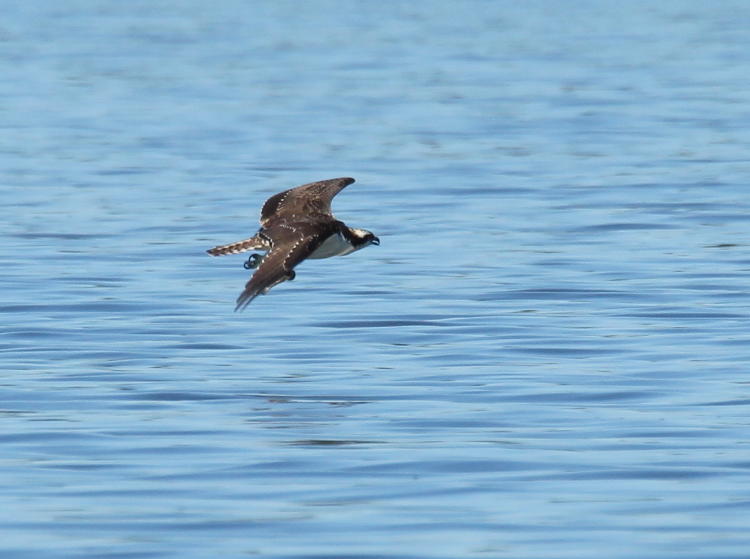
Now we see the detail crop – pretty close in focus, though not ideal, but perhaps not too unwarranted given the range and the small subject within the focus area. Unfortunately, the fish that the osprey (Pandion haliaetus) has in its talons is completely obscured.
So the goal with handholding such a lens is to get one’s grip out as far as possible, where leverage comes into play and minor movements are easier to achieve. The Tamron can technically be held out near the lens hood, but it’s always a bad idea to do this because of the strain it puts on the lens barrel and zoom ability, so a long brace attached to the tripod mount is better – I just don’t have one of these yet. And it would still be a bit demanding, because the leverage allows for more stability, but with the arm extended, different muscles come into play and there’s no propping an elbow against your chest or anything, so fatigue is likely to happen a lot quicker, worsened by the additional weight of the brace.

And of course, the very next frame in the sequence, where the pose is great and the fish now plainly visible, shows that the focus just wandered off someplace useless – not even to the background, which I could understand.
The problem might be with the VC mode that I’m using, the optical stabilization function of the lens; it’s possible that the shifting of the subject by the twitching of the internal lenses causes the AF function of the camera to be fooled momentarily, so I have to do some extensive tests in other modes. There are three: one for general stabilization, one strictly for panning, and one that only turns on as the shutter is tripped. I’d been using the first, and it’s possible that the third would work better.
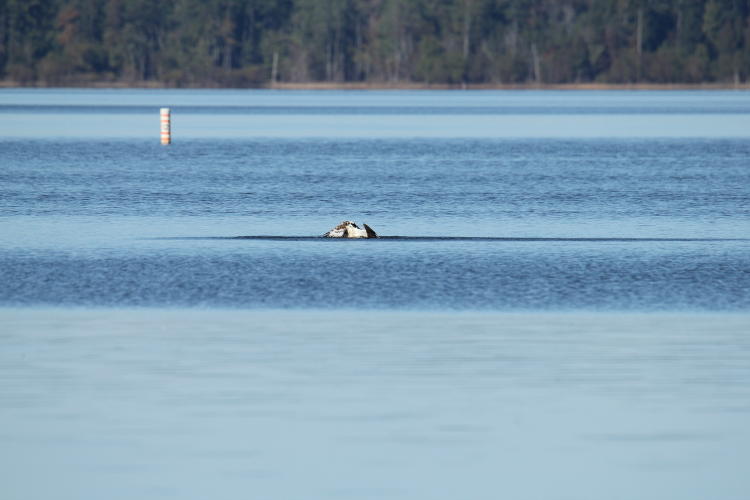
Another full frame shot – the osprey has just slammed into the water in pursuit of a fish, and I had no idea yet whether it had been successful or not. While I’ve tracked an osprey in full dive on several occasions, all the way down to entering the water, I have yet to catch a splashdown; the fucking system jumps focus as soon as the bird crosses the horizon line, every time. Supremely annoying.
The lens does have full-time manual focusing, meaning that you can grab the manual focus ring and tweak it as needed even while in active autofocus mode (without damaging anything,) and I have indeed tried this. First off, it’s awkward, because the focus ring isn’t close enough to the end of the lens or the tripod mount to slip a finger up to easily, so it requires shifting grip. Second, all I ended up doing was fighting the decision of the AF system: I’d tweak focus to where (it appeared, in the viewfinder image anyway) it should be, and the AF would immediately shift it back to where it wanted to focus. Again, with moving subjects that are changing distance, manual focus is very demanding and this is where AF should shine, but right now I’m not getting the results that I’m after.
This could be the camera’s fault, too. Right now I’m using either a Canon 30D or a Rebel T2i, and it’s possible that neither one has a robust enough AF system to handle the lens, which is considerably newer than the bodies. I’ve switched AF modes too, and focus points, without any noticeable difference in performance. At some point, I may borrow a newer body and see if that makes a significant improvement, before I bother to buy a new one just to accommodate this particular use – really, they’re both performing fine for about everything else I use them for, so replacement isn’t warranted yet.
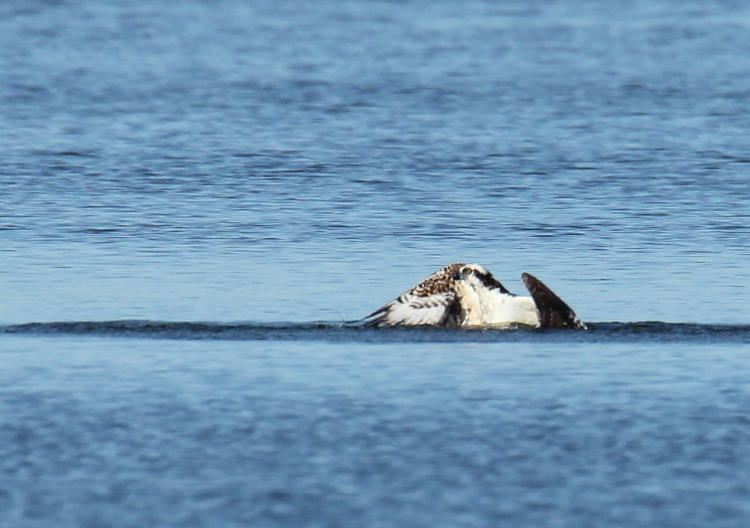
This is the detail crop of the same image above – not quite as sharp as it should be, but close enough for blog purposes anyway. Was the bird successful? Is a shark closing in? Isn’t the suspense harrowing?

Nice action shot as it starts to rise from the water, but we still can’t see if it made a clear catch!
And then there remains the possibility that the lens is at fault, unable to track focus very well. I picked it up used, but from a serious photographer and only a couple years old at worst – neither of these indicate abuse or age, but it’s still possible. And it’s possible that the lens was always that way, the reason why it was sold, or just not designed well enough for the demands. But I won’t know until I rule out everything else first.
This is the kind of troubleshooting that far too many photographers (or simply enthusiasts) never consider, instead throwing money around in the hopes that new equipment will solve the problem or magically produce the photos that they desire. That could easily spell a couple grand in expenses, and still not fix anything.
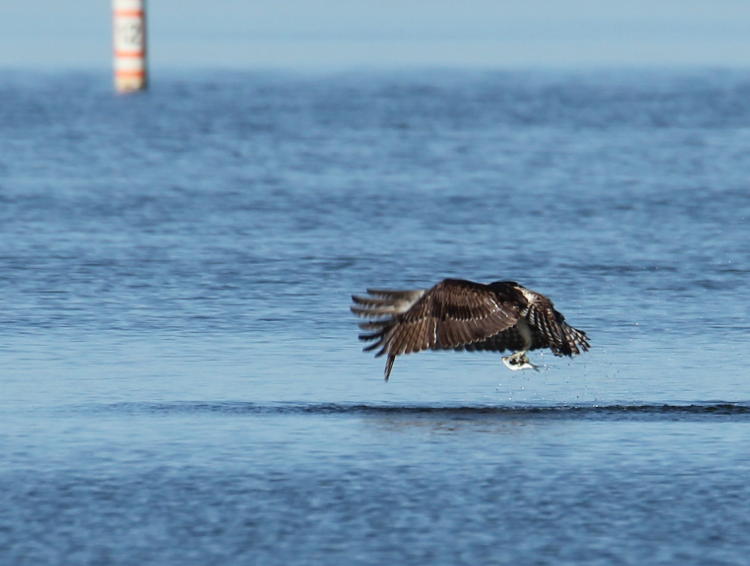
Ah, yes, there, it snagged a fish! And seems to be embarrassed by it, if the wings hiding everything else are any indication. Even when everything else goes right, the ideal poses and timing can still be difficult to pin down. For instance, being a lot closer would likely have improved everything overall, but try figuring out how to produce that routinely.
Not every shot was off – I got more than enough keepers to feel good about the day. For instance:
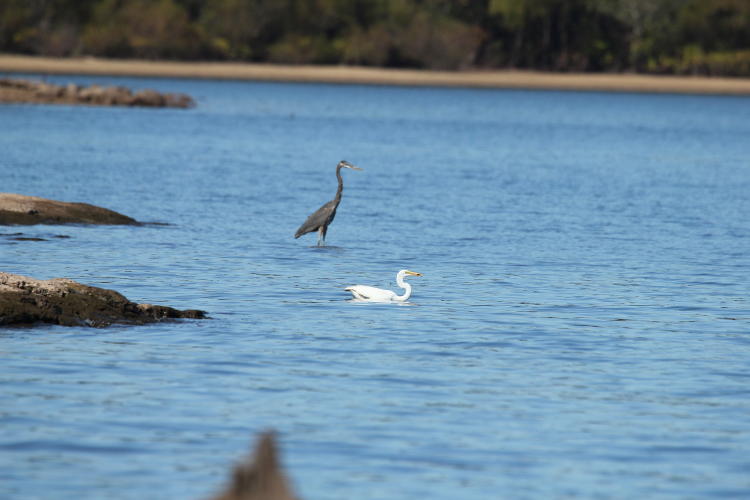
… this is the full-frame shot of a great egret (Ardea alba) and great blue heron (Ardea herodias) working the shoreline – I focused on the egret as it ventured into deeper water farther than I usually ever saw them go. But there was a reason.
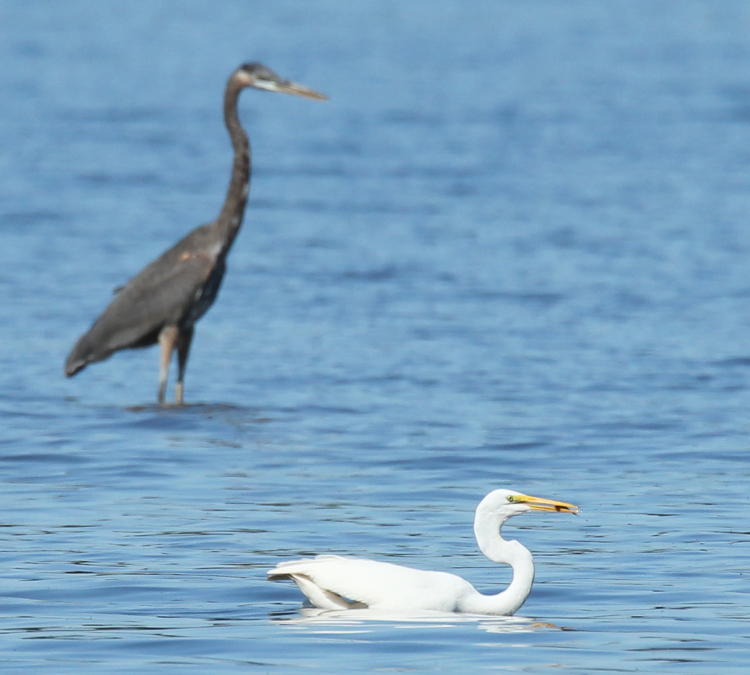
The higher-resolution crop revealed that the egret had snagged itself a small fish for its troubles, and in another frame it was gone.
Facing in the other direction on our way back much later on (this was during an outing with the Insouciant Mr Bugg,) I did a frame of… another? The same?… egret, which also captured a detail that I never could have seen in the viewfinder.
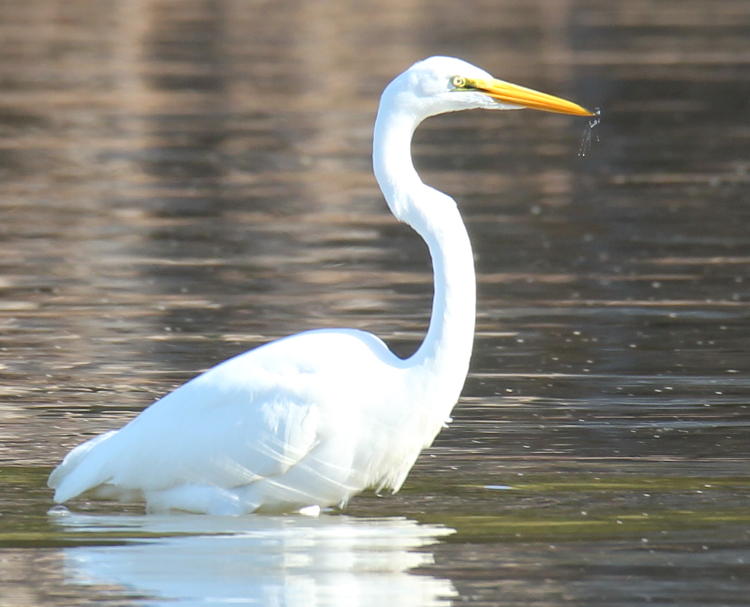
Don’t ask me to explain what’s happening here – I didn’t see it catch a fish, and I don’t know why it’s blowing water from its beak, but there you go. As for the exposure, recognize that most of the frame was that background color while the white egret itself accounted for very little for the meter to read, so the frame was exposed for the brown color and bleached out the egret. I was aiming in countless directions during the outing and did not try adjusting exposure for each situation, knowing that I’d forget at some point and have a bunch of badly-exposed images afterward, so I opted to cope with the occasional effect like this one here.
We’d been on our way back after hiking out to a point on the shoreline, when I saw a bald eagle (Haliaeetus leucocephalus) approaching, and I watched it take a perch on a tree right on the point we’d just vacated. Not ones to pass up such an opportunity, we turned around and headed back out, but the eagle didn’t hesitate very long and soon left the perch to find another several hundred meters off. I fired off a few frames as it passed, with pretty much the expected results.
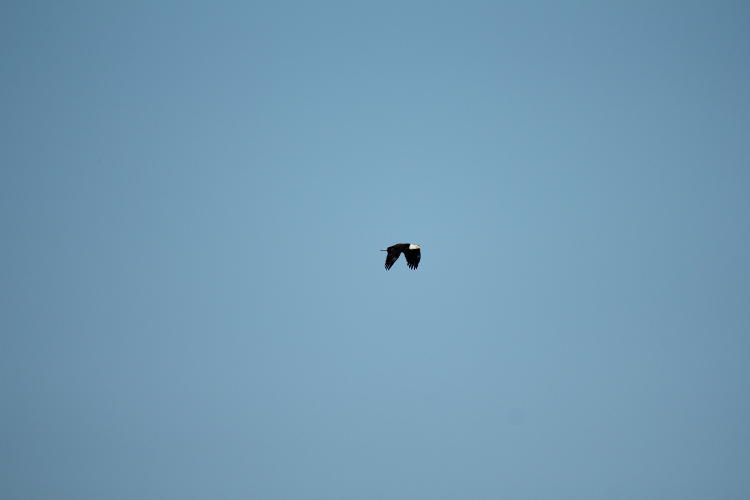
Again, this is the full frame above, while the crop sits below. Not another damn thing in the frame to attract the AF onto, so this not being sharp is bothersome.

By the way, I was in aperture priority mode the entire time, primarily locking the lens at f8, which I figured should have been sufficient while still allowing for some faster shutter speeds, but I’ll certainly try a few other apertures as well – the lens probably has a ‘sweet spot’ stopped down a bit more.
I can’t get too fired up over trying to capture a bald eagle just in flight, since they are probably the most over-photographed birds in the US. I’ll definitely go for some nice action shots or a distinctive perched portrait though, as the opportunity arises.
As some point around this time, I saw a distant splash in the water, followed by a bird emerging, but it was quite a ways off, almost as far as the eagle. I tracked it and fired off a few frames trying to make out what it was, suspicious of the low flight path just off the water. I was fairly certain that I’d spotted a few telltale traits through the viewfinder, when I heard the chittering cry just after the bird vanished from sight behind some trees: definitely a belted kingfisher (Megaceryle alcyon.)
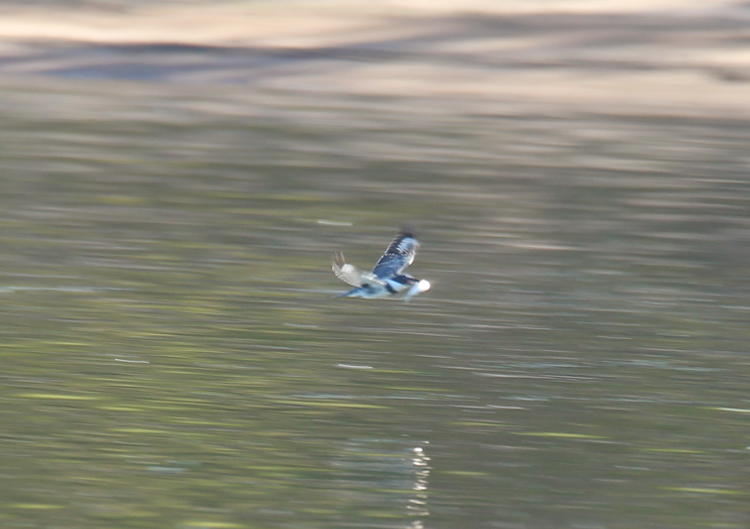
This, on the other hand, is a species that I’m still endeavoring to get a good portrait (and several action shots) of, but it’s been a challenge for years now – and obviously I didn’t succeed on this outing. They’re remarkably shy birds and I generally never even get close to one, and as yet haven’t located a distinctive haunt. Back at the turn of the century (sounds dramatic, doesn’t it?) I was out on the Neuse River shooting time exposures of the running water with the camera on a tripod, when one landed in the tree directly overhead. Knowing how spooky they were, I ever-so-slowly tried to detach the camera from the quick-release head and aim it towards the bird only a couple meters straight above; I made it about halfway before the little snot took off again.
More cooperative was a great egret that gained a perch in a cypress tree overlooking the water, and largely ignored us as we approached. We could work at leisure to frame the shots – we just couldn’t get more than a narrow range of angles due to the waterline.
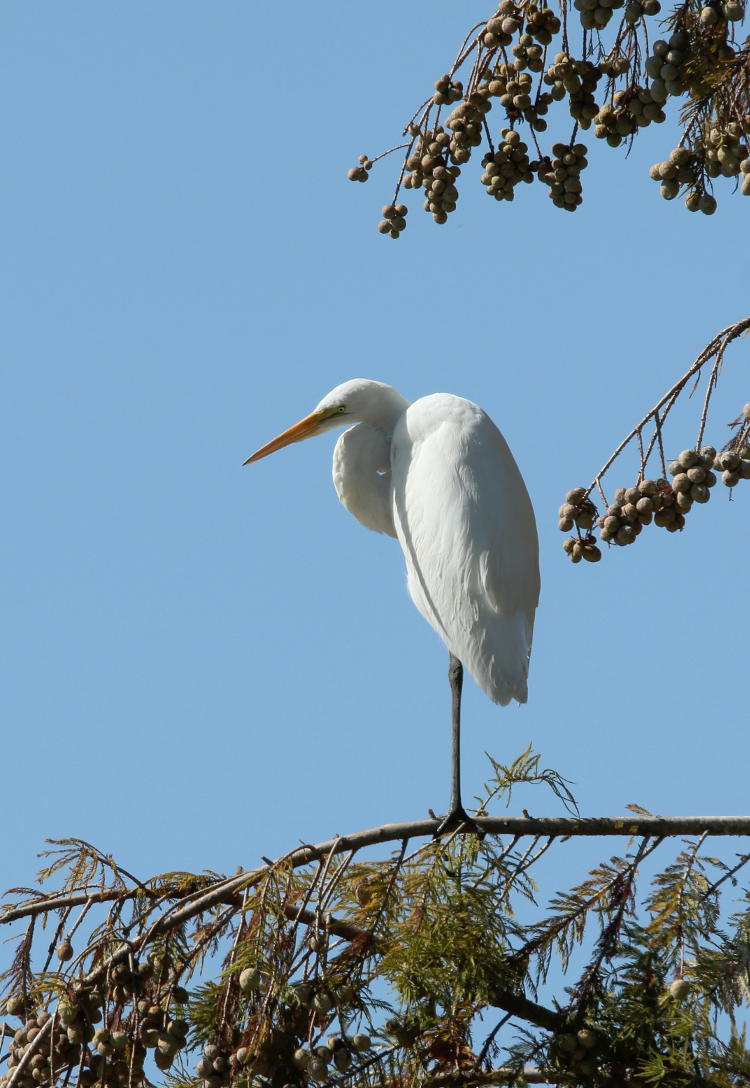
I’ve never actually seen the nuts/whatever of a cypress tree before, but they made a nice framing element. And I’m pleased with how the shadow of the beak delineates the wing.
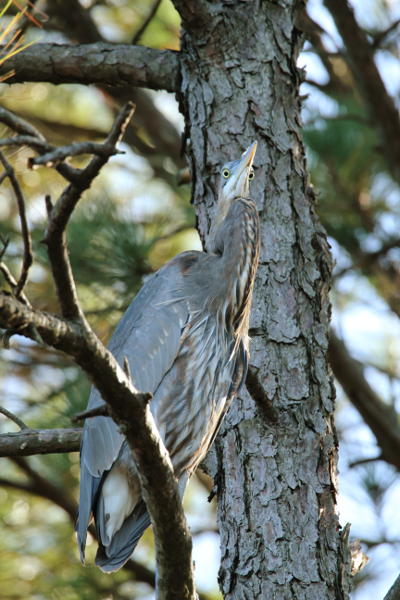 And so we work our way to the big finish, as usual. At one point we were surprised by a great blue heron taking flight from a tree very close by – we hadn’t spotted it before, but it tolerated our approach only so long before croaking its obvious displeasure as it flew off. It didn’t go very far though, and I marked its landing point right alongside our intended path back, so we stalked it slowly. As we got close, it got down to a simple drill: a couple of small and unobtrusive steps, fire off a frame or two. A couple steps more, another couple of frames, all the while keeping the cameras and long lenses aligned largely towards the bird to prevent flashing them around in radically changing profiles, essentially minimizing the movement of these as well as ourselves. We had pretty much gotten directly underneath the heron, no more than ten meters off, when it eventually got fed up again and moved further off, again with the hoarse croaking alarm call of the species, but we’d snapped more than enough frames by then. This one here is full-frame at 600mm, but the best bit is seen in detail below, cropped a bit tighter. And I’m certainly not complaining about the focus on this one.
And so we work our way to the big finish, as usual. At one point we were surprised by a great blue heron taking flight from a tree very close by – we hadn’t spotted it before, but it tolerated our approach only so long before croaking its obvious displeasure as it flew off. It didn’t go very far though, and I marked its landing point right alongside our intended path back, so we stalked it slowly. As we got close, it got down to a simple drill: a couple of small and unobtrusive steps, fire off a frame or two. A couple steps more, another couple of frames, all the while keeping the cameras and long lenses aligned largely towards the bird to prevent flashing them around in radically changing profiles, essentially minimizing the movement of these as well as ourselves. We had pretty much gotten directly underneath the heron, no more than ten meters off, when it eventually got fed up again and moved further off, again with the hoarse croaking alarm call of the species, but we’d snapped more than enough frames by then. This one here is full-frame at 600mm, but the best bit is seen in detail below, cropped a bit tighter. And I’m certainly not complaining about the focus on this one.

Read what you will into it; I personally get the impression of an elderly lady whose delicate miniature poodle has just farted loudly in public, but opinions may vary.



















































